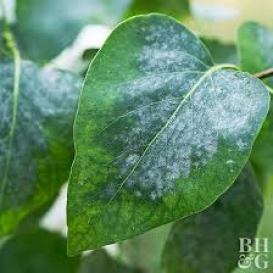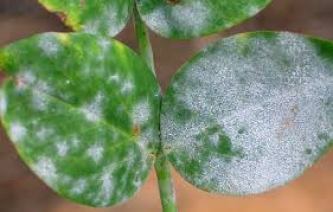Powdery Mildew: What it is and how to get rid of it!
I’ve received numerous questions these past 2 weeks asking what is the powdery substance on my plants and what can I do about it. You will find it frequently on Crape Myrtles, Indian hawthorn, and roses – but no plant is immune. It is the most common and easily recognized plant disease and is both treatable and, more importantly, preventable by using a fungicide – preferably one that is systemic. The disease is caused by a fungus and is called Powdery Mildew.
It is the most common and easily recognized plant disease and is both treatable and, more importantly, preventable by using a fungicide – preferably one that is systemic. The disease is caused by a fungus and is called Powdery Mildew.
Recognizing Powdery Mildew:
It looks like powdery splotches of white or gray on the leaves and stems of plants. There are different types of the fungi but they all look the same.
What causes it:
The fungi is everywhere – it overwinters in leaves on the ground and begins producing spores in the spring which are carried by wind and insects to your plant. High humidity seems to play a part in its growth.
What it does:
Although unattractive it isn’t usually fatal to the plant. It will stress a plant and infected leaves will gradually turn brown and papery and often fall off prematurely. If buds are infected they may not open.
 The Good News:
The Good News:
Powdery mildew is host specific – meaning if it is on one type of plant it won’t transfer to another type of plant. For example: the powdery mildew on a rose bush will not spread to any other plant except another rose bush.
Treatment:
Use of a systemic fungicide has been successful in treatment in the early stages of the disease and even more importantly in prevention of the disease. Fertilome Liquid Systemic Fungicide II with propiconazole is recommended for use on powdery mildew.
Other Hints:
-
Choose plant species that have resistance to powdery mildews. Some examples are the powdery mildew-resistant crape myrtles – most Indian names varieties are in this group.
-
Don’t let years of leaf debris build up in your beds.
-
Pruning or removing infected leaves or stems can help reduce the amount of the fungus.
-
Poor airflow to plants seems to contribute to the problem also, so avoid overcrowding of plants in your landscape.


